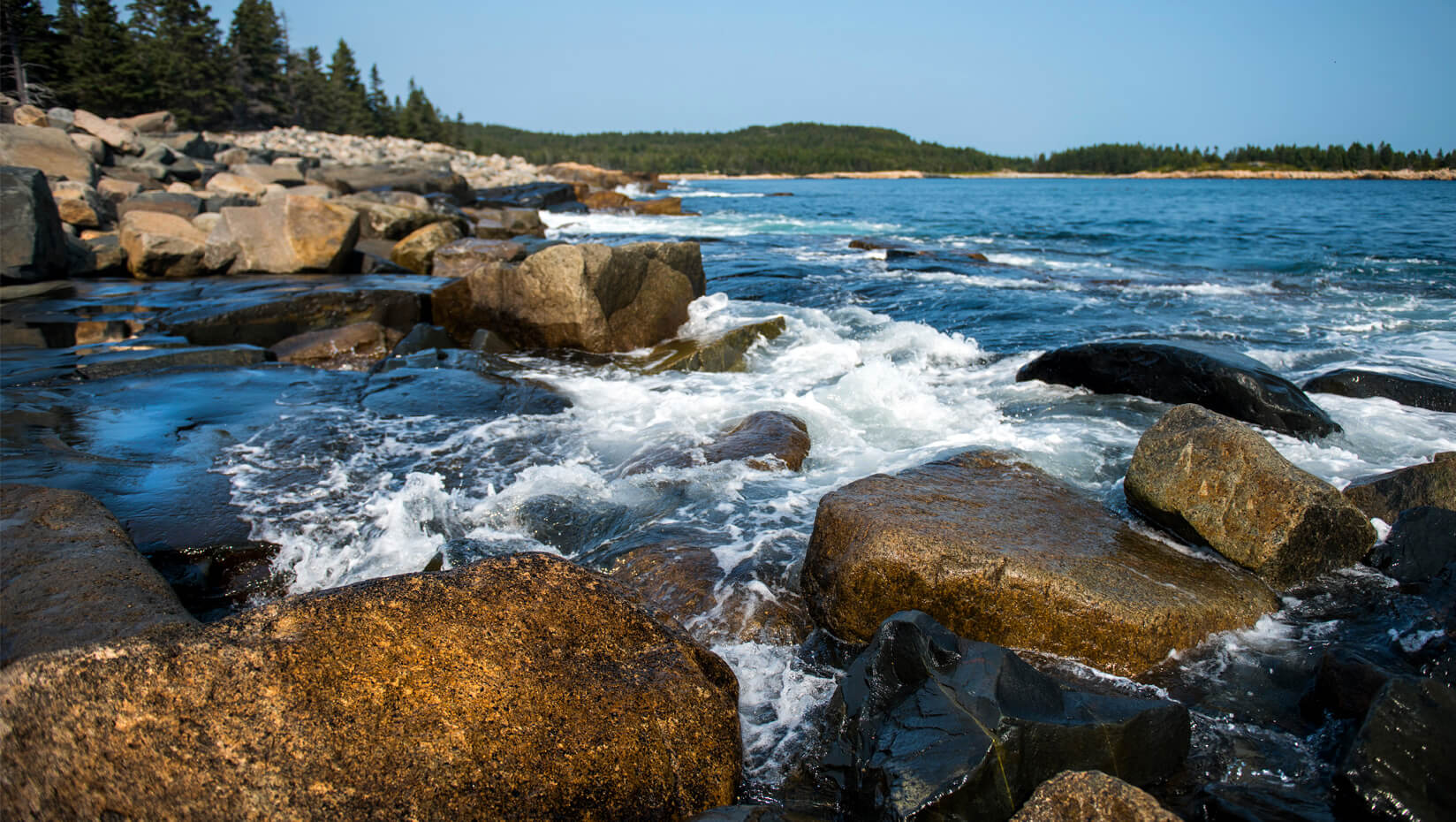
National Park Service, UMaine propose ways to promote communication between scientists, public
Facilitating effective communication between scientists working in national parks and the public is the focus of a new publication by the National Park Service (NPS) in collaboration with the University of Maine.
The report, “Science in Places of Grandeur: Communication and Engagement in National Parks,” was published in the journal Integrative and Comparative Biology and written by Tim Watkins, the science access and engagement coordinator with the NPS Natural Resource and Stewardship Directorate; Abraham Miller-Rushing, science coordinator for Acadia National Park and Schoodic Education and Research Center; and Sarah Nelson, an associate research professor in UMaine’s School of Forest Resources and director of the Ecology and Environmental Sciences Program.
NPS supports and facilitates scientific studies in parks, resulting in many opportunities for researchers to engage with the public in sharing their research. More than 400 national parks and other protected areas managed by NPS draw more than 300 million visits per year, generating significant potential for scientific education and outreach for visitors. The study explores opportunities for developing communications efforts to communicate science to public audiences, with specific examples for collaboration between scientists and park communications staff to achieve communications goals.
Scientists conducting research in national parks “can place their science directly into a personal and civic context and engage a highly interested and receptive audience who are experiencing positive emotions,” say the researchers.
The researchers want to educate scientists interested in bringing their research into the sphere of public attention on important ideas and information surrounding scientific communication in national parks. These include the fact that national parks are valuable places for both research and related outreach; the programs already in place with NPS to support scientific work; the “expertise, ability, and willingness” of park staff to support outreach activities; and that collaboration between scientists and park staff is recommended as a way to ensure research “informs management and increases public awareness, understanding, and appreciation for national parks and for science.”
The report provides examples ranging from easily achievable outreach efforts — like explaining science to an audience at a science festival, workshop or research presentation, especially on topics related to enjoyment of the park — to more effort-intensive initiatives, such as engaging an audience in citizen science opportunities like Nelson’s Dragonfly Mercury Project to encourage public participation in research. Other proposed outreach methods include scientists contributing their expertise to NPS communications products, planning for communication to be included in a research project through sustained collaboration between scientists and communications experts, and training and practice in science communications through internal workshops.
According to the researchers, scientists should be prepared to explain their research to park visitors they might encounter who could have questions; to develop relationships between scientists and park staff to facilitate successful outreach; and to plan for communication and engagement more than one might think necessary just in case; to recognize that engaging the public in doing science is often more effective than simply presenting it to them since it “takes more time but the interests and rewards are great” like sustained and extended dialogue between scientists and the public; and that adding insights into the lives of the scientists and how they conduct research to develop public perception of them as regular, relatable people can help draw and retain audiences.
The research team also recommends that, “Scientists and/or communication professionals (ideally both, working together) need to define their audiences, desired outcomes, and select engagement practices accordingly. The collaboration is important, as NPS staff and academic scientists may have different connections, knowledge, and skills to reach different audiences in different ways.” For example, communicating with the public about native and exotic plants in a park can be done through talks at garden clubs.
Scientists working in national parks should be prepared to put substantial, meaningful work into communications efforts, the researchers say, but it’s worth it to educate the public about research happening in parks.
NPS communicators have “consistently mastered and applied the art of explaining the significance of resources, helping visitors find personal meaning in them, and inspiring people to care about these protected places,” according to the researchers.
They conclude that, “Communicating the science through which we understand these unique places and resources, however, is a relatively new role.” And scientists themselves are the key to creating new methods of collaboration to communicate both the process and results of that research to the public in relevant, accessible ways.
The paper was included in a symposium on public engagement in science at the 2018 annual meeting of the Society for Integrative and Comparative Biology.
Contact: Cleo Barker, 207.581.3729
